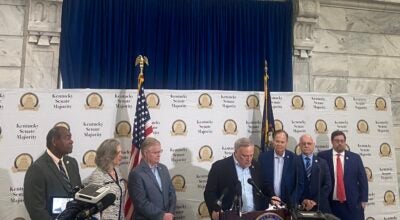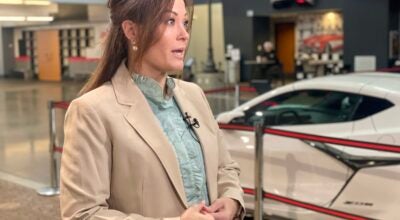Meet Kentucky’s 1st COVID-19 double lung transplant patient
Published 3:31 pm Sunday, June 6, 2021
Dave Hoover, 43, checked into the emergency room at Ephraim McDowell Regional Medical Center in January after his face started turning blue when he would take a few steps around his house.
He didn’t know then that he’d remain hospitalized for more than three months as his lungs steadily got worse, that he’d be ventilated and given a throat catheter, or that he’d be the first COVID-19 patient in Kentucky to receive a double lung transplant.
“I don’t think I knew exactly how critical I was until after the transplant,” Hoover said. “After I started feeling better, my wife started sharing some things with me and I was speechless. I’m just very grateful.”
Hoover, of Stanford, is a hobby farmer and a factory worker. He’s a husband and the father of two kids and a former bodybuilder. He’s the kind of healthy, younger person who isn’t statistically likely to develop severe complications from COVID-19.
When he caught the coronavirus in January, he thought it was allergies or a minor illness. Even after he checked into the hospital, he had seemed mostly fine — he and his wife Emily were talking about doing pulmonary rehabilitation to try and support him at home — but by February 25th, he was transferred to the University of Kentucky Medical Center and they were talking about putting him on a ventilator.
“It just spiraled to where he was requiring a lot more support than he was getting at that time,” said Emily, who is a nurse.
Over the next three months at UK, Hoover’s lungs continued to get worse. He developed a complication from being on the respirator that allowed air to seep into his chest, so they had to catheterize his throat in order to inject oxygen directly into his veins.
He was put on the lung transplant list, where he waited for a month. In the meantime, he had to try to sit up and walk while he was on a type of heart-lung machine called an ECMO.
“Walking on ECMO, I will have to say, is probably the hardest thing I’ve ever done in my life,” Hoover said. “Just because it actually felt like I was drowning just trying to walk.”
He made it about 10 feet the first time he walked while on the machine and got up to about 75 feet before his transplant. He said walking before his surgery helped him recover faster after his surgery.
Dr. Maher Baz, the medical director of UK’s lung transplant division, said that 15 percent of patients don’t make it through the waiting period for a lung transplant, because too few people are organ donors.
“They were very brave for this, very motivated and that’s what kept him on his feet,” Baz said. “That’s what really got him through the waiting time, his motivation and courage.”
Hoover was discharged from the hospital on April 23 and returned home to his 4-year-old son and 19-year-old daughter.
Emily Hoover urged people to become organ donors. There are currently at least two COVID-19 patients waiting for lung transplants in Kentucky.
Baz and Dr. Ashley Montgomery-Yates, the director of UK’s ICU recovery unit, stressed the importance of being vaccinated since more than 95 percent of the patients who are hospitalized with COVID-19 right now are not vaccinated.
Dave Hoover said he was originally skeptical of having to wear masks and whether or not he needed the vaccine. Now he says he’s become an advocate and will get the vaccine as soon as he’s able (the medications he has to take for his body to accept the new organ makes him immune-compromised).
“I’m just so thankful to be here and have a second chance at life,” Hoover said.






